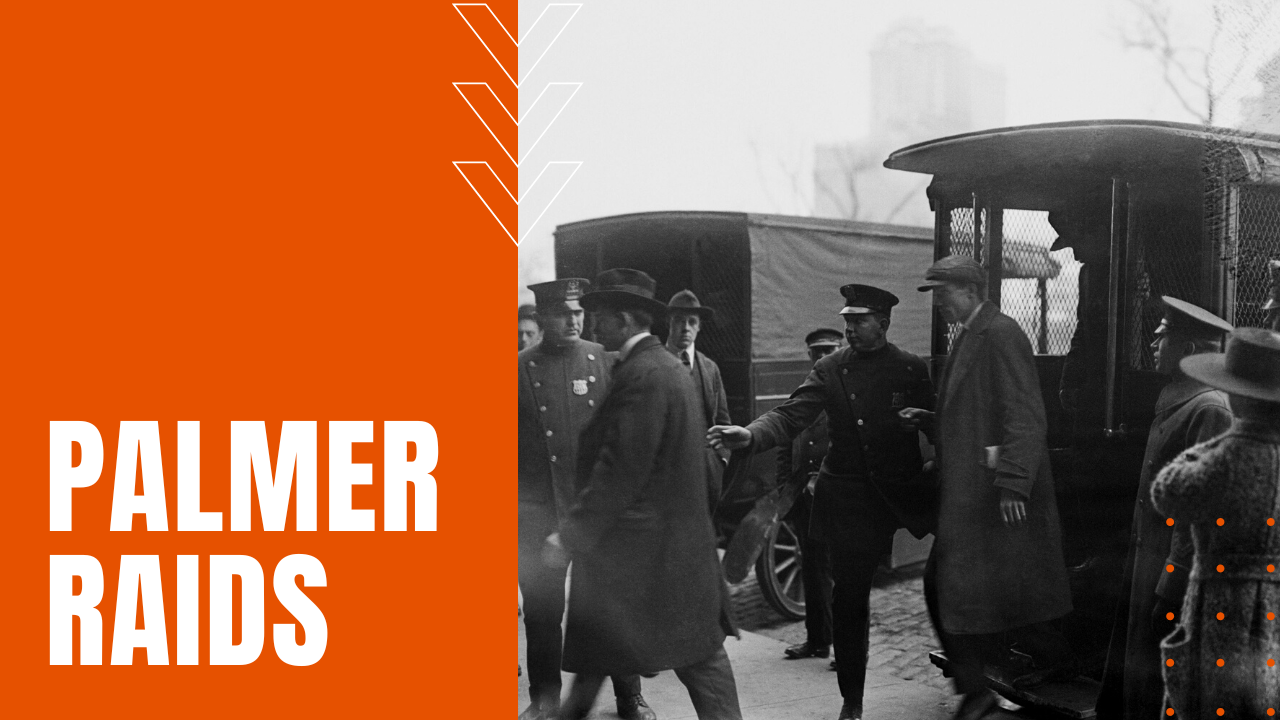The Palmer Raids: J. Edgar Hoover’s Fight Against Communism

After the Bolshevik Revolution of 1917, Americans soon feared the spread of Communism into the United States, pointing a collective finger at radicals, immigrants and labor activists, using the Sedition Act of 1918 to target anyone espousing anti-American sentiments.
Adding fodder to the Red Scare of 1919 and 1920, anarchists sent letter bombs—both successful and intercepted—to prominent politicians and industrialists, including Oliver Wendell Holmes, Georgia Senator Thomas Hardwick, John D. Rockefeller and J.P. Morgan.
What Were the Palmer Raids?
Americans were made increasingly paranoid by anarchist violence, leading Attorney General A. Mitchell Palmer to appoint 24-year-old Justice Department lawyer J. Edgar Hoover to the task of rooting out and deporting suspected anarchists, socialists, communists and leftist labor activists in what became known as the Palmer Raids.
Hoover’s analysis within the Bureau of Investigation—the predecessor to the FBI—invoked the Sedition Act in the fall of 1919, arresting well-known anarchists Alexander Berkman and Emma Goldman, before beating some 200 occupants of New York City’s Russian People’s House with billy clubs and blackjack.
Raids were conducted in most major American cities, witnessing the arrest of more than 1,000 people, while 100 suspected radicals in Hartford Connecticut were held for five months without legal representation or formal charges of any kind. By the end of 1919, a total of 249 radicals had been deported aboard the USAT Buford, which soon earned the nickname, The Soviet Ark.
A final round of Palmer Raids began on January 2nd of 1920, when Justice Department agents conducted violent raids in 33 American cities, leading to the arrest of 3,000 suspected radicals, including raids on union halls, radical bookstores and ethnic fraternal clubs.
Results of the Palmer Raids
In the end, of the nearly 10,000 people arrested in the Palmer Raids, 3,500 were held by authorities for interrogation and unlawful detention, leading to the deportation of 556 resident aliens under the Immigration Act of 1918.
The Justice Department’s raids soon came under scrutiny by lawmakers and judges, leading Massachusetts District Court Judge George. W. Anderson to comment upon the release of 17 arrested aliens, that “a mob is a mob, whether made up of Government officials acting under instructions from the Department of Justice, or of criminals and loafers and the vicious classes,” making the Palmer Raids, a blatant disregard of American’s First Amendment rights.
